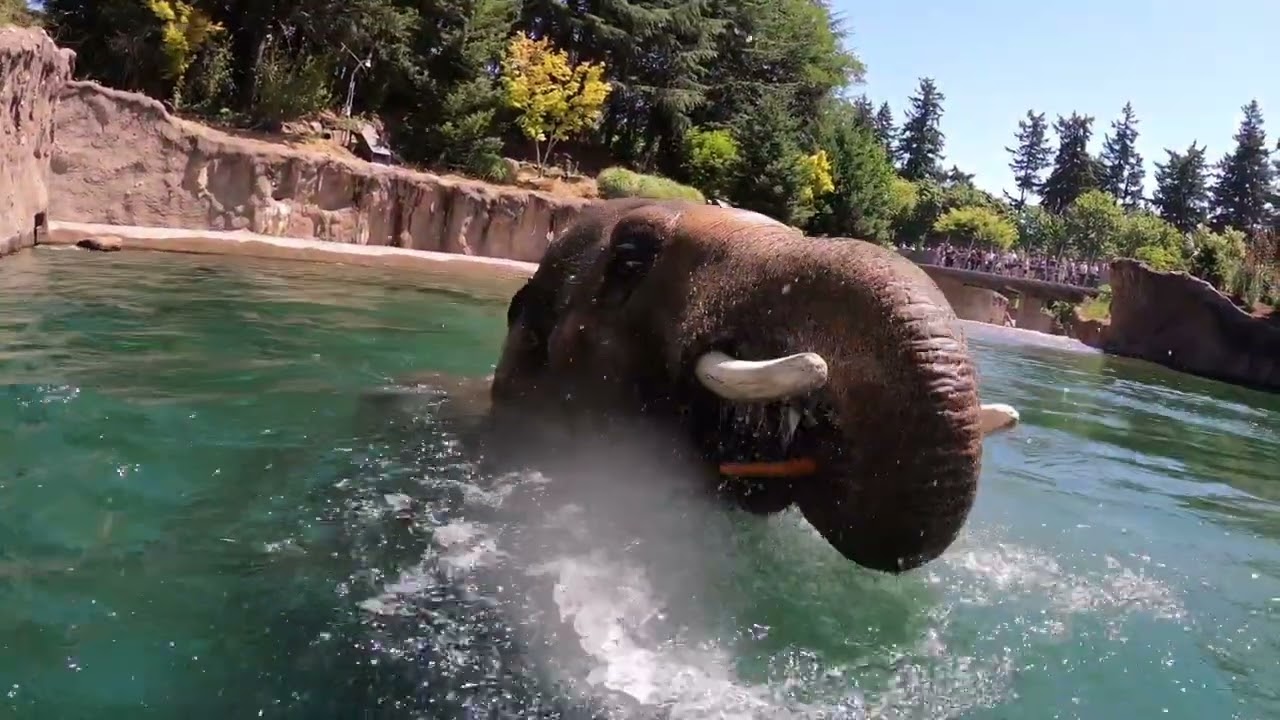Summary:
1. Introduction to Samudra, the Asian elephant at the Oregon Zoo.
2. The rapid growth and development of Samudra over the past 15 years.
3. The unique characteristics and behaviors of Asian elephants.
4. Conservation efforts to protect Asian elephants and their habitats.
5. The importance of zoos in educating the public about these majestic creatures.
Imagine celebrating your 15th birthday as a 10,000-pound gentle giant! What’s happened to Samudra, the Asian elephant at the Oregon Zoo? Born weighing 286 pounds, he has grown into an astonishingly massive creature, and he’s not done growing yet! Let’s take a closer look at Samudra, the fascinating world of Asian elephants, and why protecting these magnificent animals is crucial.
Samudra’s journey at the Oregon Zoo began 15 years ago when he arrived with a splash – quite literally! Born underwater in the zoo’s elephant pool, he wasted no time making headlines. From that moment on, Samudra captured the hearts of many visitors with his cute and playful antics.
But let’s talk about his growth spurt. From a tiny 286-pound ball of fluff to a colossal 10,000-pound powerhouse, Samudra has experienced a remarkable transformation. Just like humans, elephants go through different stages of growth, and Samudra’s journey highlights the incredible rate at which they develop.
Asian elephants, the species to which Samudra belongs, are the largest land animals on Earth. Besides their size, they are known for their distinctive features, including their large ears, long trunks, and magnificent tusks. These tusks, however, are not present in female elephants. Each elephant’s unique set of tusks grows throughout their lives, much like our fingernails.
Samudra’s enormous size is undoubtedly impressive, but what truly makes Asian elephants captivating is their intelligence and social behavior. These gentle giants are incredibly social creatures, forming tight-knit family groups led by a matriarch. Within these groups, elephants communicate using a variety of vocalizations, including trumpets, rumbles, and roars that can be heard over long distances.
Despite their strengths and intriguing communication methods, Asian elephants face numerous threats in their natural habitats. Deforestation, poaching, and human-elephant conflicts have significantly impacted their populations. That’s why conservation efforts are so crucial in protecting and preserving these magnificent creatures.
Various organizations, including zoos, work tirelessly to raise awareness about the conservation of Asian elephants. Zoos play a fundamental role in education and research, allowing visitors to learn about these animals up close. By providing safe and humane environments for elephants like Samudra, zoos serve as ambassadors for their species, fostering a connection between people and wildlife.
But it doesn’t stop there. Conservationists collaborate with local communities in Asian elephant range countries to develop sustainable solutions for habitat loss and human-wildlife conflicts. By engaging with local stakeholders and implementing measures to promote coexistence, these initiatives strive to safeguard the future of Asian elephants.
Samudra’s journey from a tiny calf to a massive powerhouse symbolizes the growth and potential of these remarkable creatures. As he continues to thrive at the Oregon Zoo, his presence reminds visitors of the importance of protecting and appreciating the natural world around us.
So, the next time you visit a zoo like the Oregon Zoo, take a moment to marvel at the incredible Asian elephants. Observe their interactions, learn about their unique behaviors, and let yourself be inspired by their size and resilience. Together, we can ensure a brighter future for Samudra and his fellow elephants, preserving the wonders of nature for generations to come.
*****
Source Description
Asian elephant Samudra turned 15 years old at the Oregon Zoo today, and it’s safe to say birthday boys don’t come much bigger. The playful pachyderm, who weighed 286 pounds at birth, now tips the scales at around 10,000 pounds — and he’s still growing!

